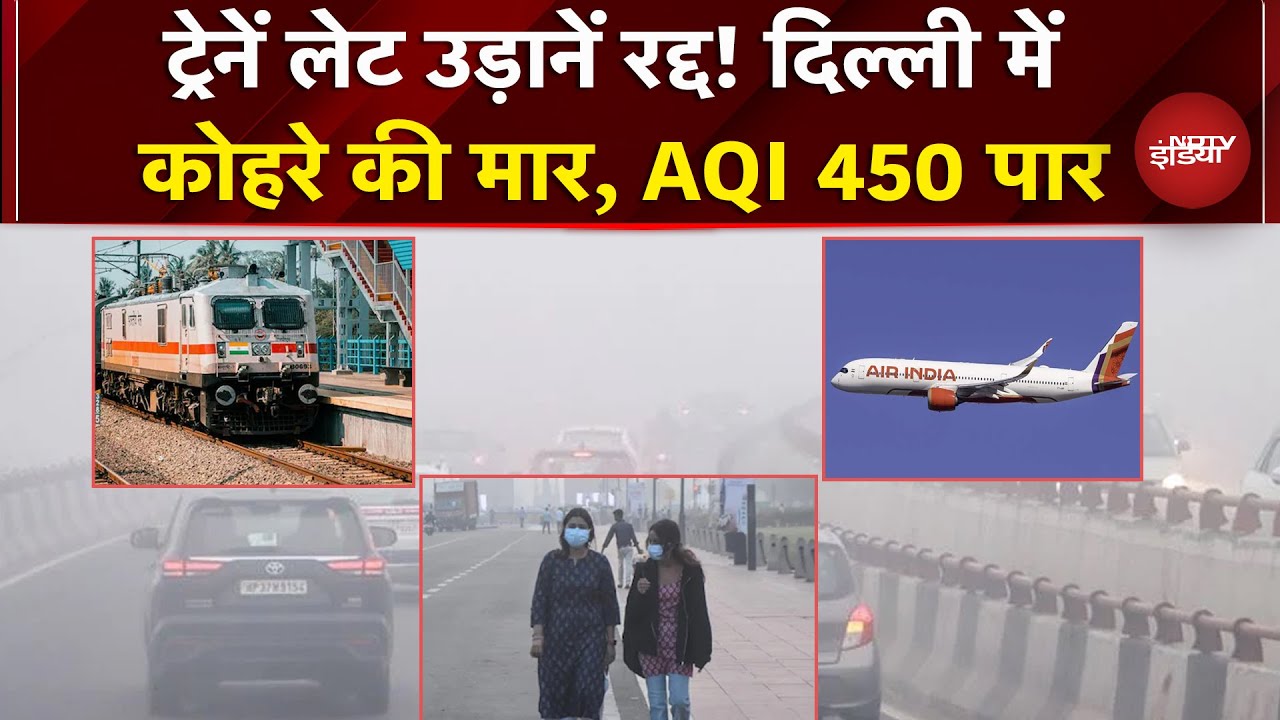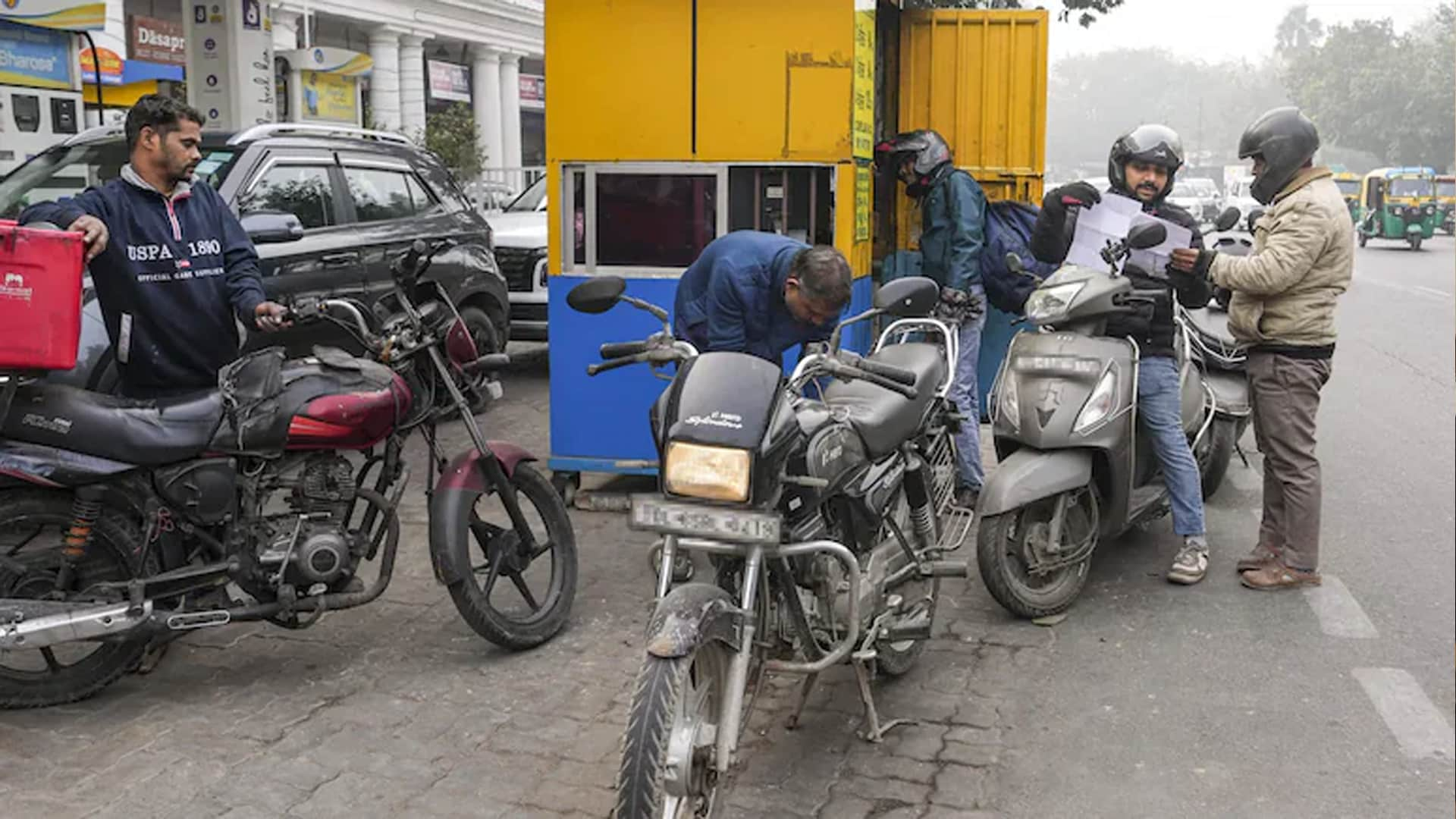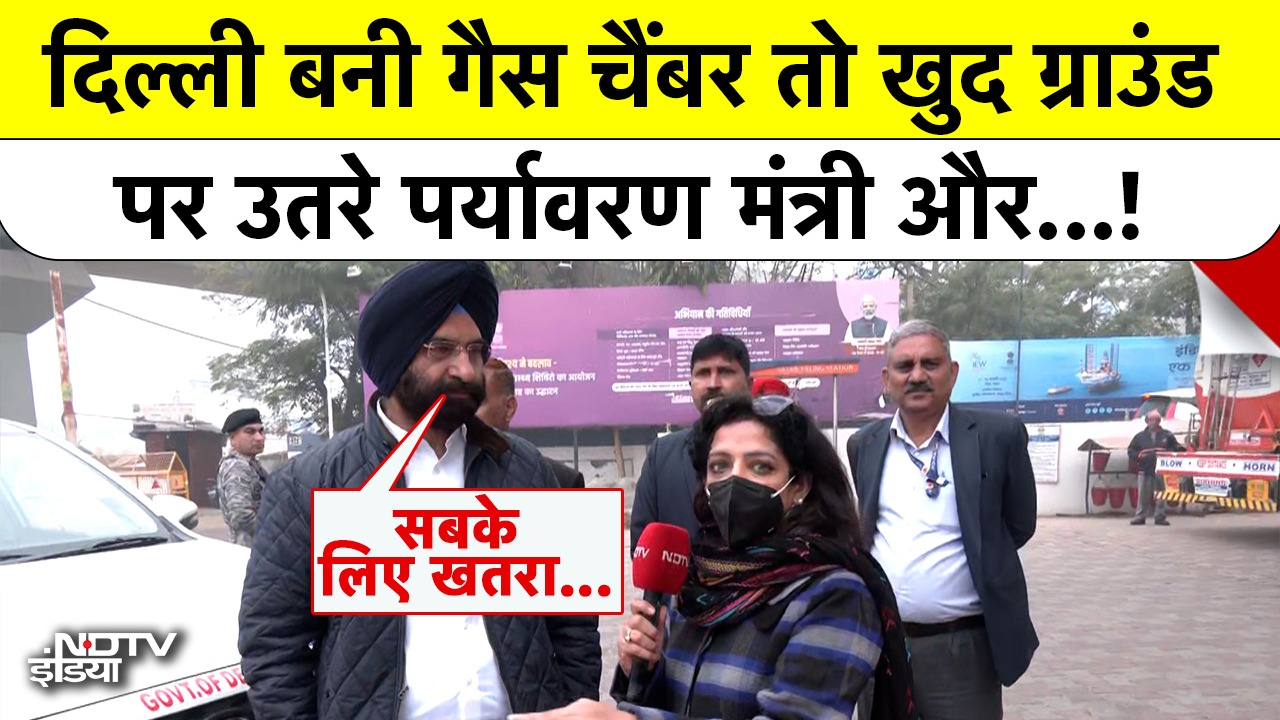- Home/
- Short-Term Exposure To Air Pollution Kills 33,000 Indians Annually: Report
Short-Term Exposure To Air Pollution Kills 33,000 Indians Annually: Report

Nearly 33,000 deaths in 10 cities in India every year can be attributed to air pollution levels that are below India's national clean air threshold. The report has been published in Lancet Planetary Health.
India's clean air norms are presently well above the World Health Organisation guideline of 15 micrograms in every cubic meter of air. The report makes the point that India must drastically reduce its clean air norms to at least match WHO guidelines to protect citizens from the dangers of polluted air.
The authors used data on PM2.5 exposure in the 10 cities and the daily counts of mortality between 2008 and 2019.
Even levels of air pollution below current Indian air quality standards lead to increased daily mortality rates in the country, the study found.
"Across 10 cities in the country - Ahmedabad, Bengaluru, Chennai, Delhi, Hyderabad, Kolkata, Mumbai, Pune, Shimla, and Varanasi, around 33,000 deaths per year can be attributed to air pollution levels that are above the WHO guidelines.
"A significant number of deaths were observed even in cities not considered to have high air pollution, such as Mumbai, Bengaluru, Kolkata, and Chennai," it said, adding, "India's national air quality standards should be made more stringent, and efforts to control air pollution redoubled."
Between 2008 and 2019, 7.2% of all deaths (approximately 33,000 each year) across all 10 of these cities could be linked to short-term PM2.5 exposure that was higher than the WHO guideline value of 15 micrograms in every cubic meter of air, the study found.
"Every 10 micrograms in every cubic meter of air increase in short-term PM2.5 exposure was associated with a 1.42% increase in daily deaths. This estimate nearly doubled to 3.57% when we used a causal modelling approach that isolates the impact of local sources of air pollution," the release said.
Delhi recorded the highest number of air pollution-related deaths in the study period - a staggering 11.5% i.e. 12,000 deaths each year. "The deaths were attributable to short-term PM.5 exposure higher than the WHO guideline value," the study showed.
"Every 10 micrograms per cubic meter of air increase in short-term PM.s exposure was associated with a 0.31% increase in daily deaths."
Varanasi logged the second highest number of deaths during the period - 10.2% or around 830 deaths a year, attributable to short-term PM2.5 exposure higher than the WHO guideline value. Every 10 micrograms per cubic meter of air increase in short-term PM.s exposure was associated with a 1.17% increase in daily deaths, the study showed.
Around 2,100 died in Bengaluru, 2,900 in Chennai, 4,700 in Kolkata, and around 5,100 each year in Mumbai each year due to the rising air pollution during the study period. The deaths were all attributable to short-term PM2.5 exposure higher than the WHO guideline value.
The lowest air pollution levels were recorded in Shimla. However, air pollution was still a risk in the hill city with 3.7% of all deaths - 59 per year - attributable to short-term PM2.5 exposure higher than the WHO guideline value. "The results from Shimla add credence to global evidence that there is no safe level of air pollution exposure," the study highlighted.
It is the first multi-city study that assessed the relationship between short-term air pollution exposure and deaths in India, with the cities included spanning a wide range of air pollution concentrations and situated in different agro-climatological zones, a press release said.
The study was conducted by researchers from Sustainable Futures Collaborative, Ashoka University, Centre for Chronic Disease Control, Sweden's Karolinska Institutet, Harvard and Boston Universities, and other places.
There was a steep increase in the risk of deaths at lower concentrations of PM2.5 and tapering off at higher concentrations, with significant effects observed below the current National Ambient Air Quality Standard of 60 micrograms per cubic meter of air for a 24-hour exposure, it said.
also read
"Leaving Delhi After 13 Years": Man Blames City's Pollution For Developing Asthma
Edited by Astitva RajAs Delhi Chokes, MPs Scrap Air Crisis Debate Over Bad 'Atmosphere': Sources
Written by Chandrashekar Srinivasan3,746 Challaned, 61,000 PUCs Issued On Day 1 Of 'No PUC, No Fuel' In Delhi
Reported by Ishika Verma
Latest Stories
- Edited by Astitva Raj | Friday December 19, 2025
His post quickly became popular among people who have experienced similar health and safety concerns while living in Delhi.
- Press Trust of India | Friday December 19, 2025 , New Delhi
Commuter awareness rises after Delhi's BS-VI and No PUC, No Fuel enforcement; fuel sales dip in border areas, PUC queues remain steady, says DPDA president.
- Written by Chandrashekar Srinivasan | Friday December 19, 2025 , New Delhi
India's lawmakers were supposed to discuss the horrid blanket of toxic air smothering the national capital region sometime during Parliament's winter session, which wrapped up Friday. But they could not find the time.
- Friday December 19, 2025
After the fourth T20I between India and South Africa in Lucknow was abandoned due to 'excessive fog', concerns regarding Air Quality Index (AQI) has been raised ahead of the fifth T20I in Ahmedabad.
- Reported by Ishika Verma | Thursday December 18, 2025 , New Delhi
Delhi's 'No PUC, No Fuel' directive came into force across the national capital on Thursday amid claims of strict enforcement
................................ Advertisement ................................
Latest Videos
Opinion
Blog | Well Done, Delhi. You've Turned Lung Sacrifice Into A Badge Of HonourSaikat Kumar Bose
Monday November 10, 2025Till some years back, Delhiites would ask angry questions to those in power about the capitals annual tryst with toxic air. This has changed. Those in the driving seat dont see the need to answer now.
Opinion | Why Indians Have Just Given Up On Air Pollution CrisisTanushree Ganguly
Friday December 20, 2024While some may argue that people in Delhi are now more aware of air pollution than they were a decade back, my rebuttal would be that awareness does not mean that people are concerned.
Opinion | You Must Outrage Over Filthy Air More Than Once A YearJyoti Pande Lavakare
Tuesday December 10, 2024Delhi welcomed us with monsoon rains and mangos. We were home. Fast forward a couple of years, in the winter of 2012, I found myself in denial about something other parents, mostly expats, were calling toxic air.
Opinion | Delhi's Air Pollution Situation Is Like A Bad MarriageNishtha Gautam
Friday November 22, 2024On a good day, such as today, the AQI reading in Delhi is 407. We are jubilant at the sickly sunshine trickling through the slightly dissipated smog. At least its not 1600.
दिवाली... पराली... सियासी जुगाली!Ashwini kumar
Monday November 18, 2024दिल्ली-एनसीआर में प्रदूषण का समाधान तो आज तक मिला नहीं. हर साल चिंतित होकर हम-आप सांसों की तकलीफ के साथ-साथ दिल और ब्लड प्रेशर के मरीज भी क्यों बनें?


















